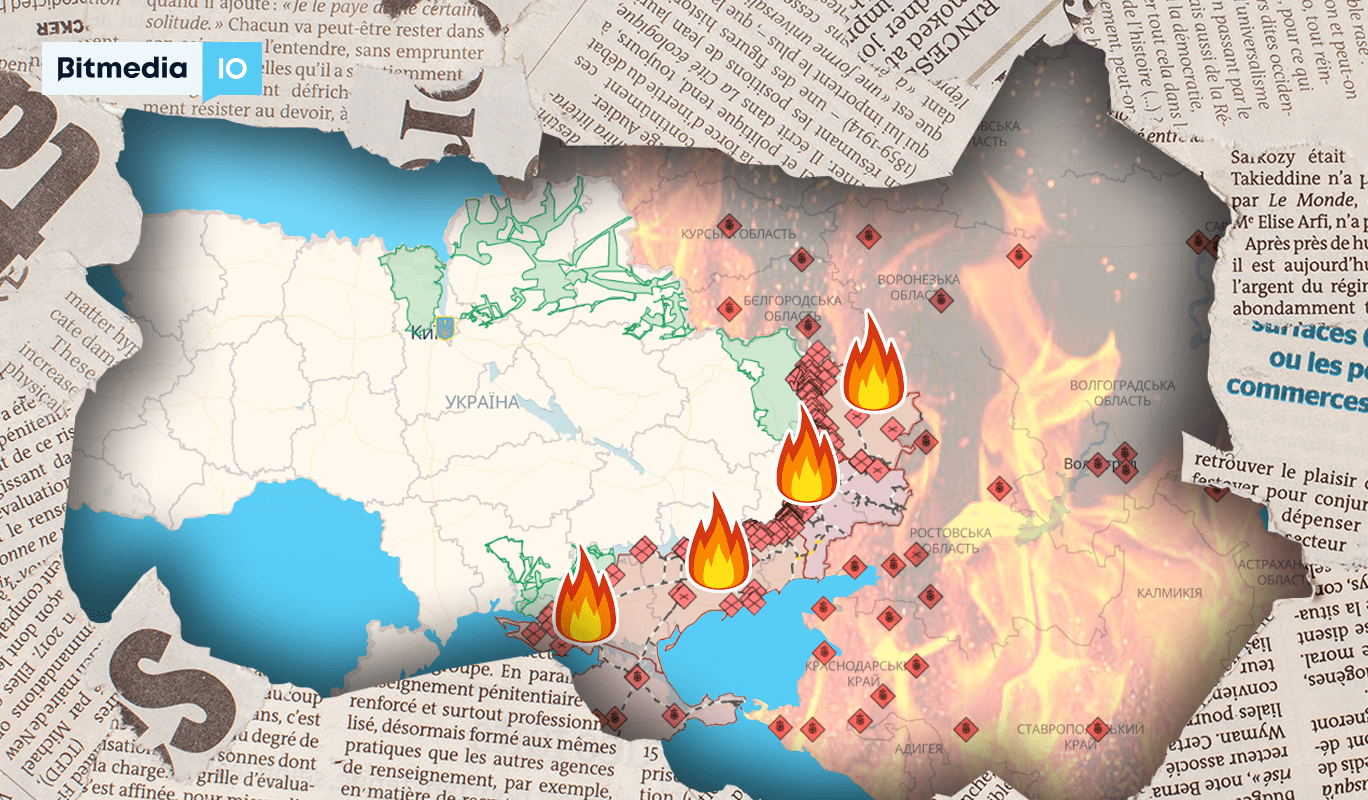The Role of Information During Wars – Russian Invasion of Ukraine 2022

Information is critical to the proper functioning of society, and it wields an insane amount of power. Just one sentence can be powerful enough to send a whole group of people into a frenzy, willing to take the life of other humans. But when we’re talking about war, such as the one currently underway between Russia and Ukraine, that information becomes even more critical and influential.
Whether it’s military commanders sending instructions to troops, battle plans, availability of supplies, or simply a post about a leader’s current location and activities, this information can quickly change the course of battle. But how is this information being used and what is the impact on the global population when this information is changed?
Let’s take a look.
What is the role of information technology in the military?
During wartime, the military will need to use IT resources to transmit sensitive information between the frontlines, battle ops, and politicians in their palaces. This highly sensitive information is stored digitally, then transmitted between people that are required to see it through cables and satellites. But, without proper encryption and cyber hygiene, this information can quickly fall into the wrong hands. This can result in the information being tampered with, resulting in disinformation. A single data breach could cost thousands of lives. When you consider that all of these networks are built and operated by a range of departments and branches, it leaves a lot of potential for weaknesses.
Mission critical information aside, the military can also use information for nefarious purposes too – disinformation is spread to keep morale high and dictators in power.
Russian talk shows dismiss ‘fake’ reports of military losses
Russia isn’t faring as well as it had hoped in its current invasion of Ukraine, a fact backed up by data and body count. But Russian leaders know that presenting its people with this information would result in a massive uprising and coup, so they’re currently at work taking down all independent media outlets and spreading disinformation. For example, Russian talk shows are brandishing reports of Russian casualties as “fake news”. These shows are flying in the face of the factual evidence, further pushing the Kremlin’s propaganda campaign.
In fact, inside Russia, the disinformation situation is much worse. Pre-recorded broadcasts that have been heavily edited with special effects show a united Russia, with a powerful leader at the helm going about business as usual. However, the real story is a despot dictator cowering in a bunker while his last remaining loyal military police round up all those that dare expose the truth, throwing them in the gulag.
What’s the difference between misinformation and disinformation?
These two terms are often confused with one another, and as a result, we see finger-pointing from both sides of the border for spreading fake news. In this case of Russia’s invasion of Ukraine, we’re seeing a lot of both, and that’s completely normal, especially when a large portion of the world sides so heavily with one side.
Misinformation is untrue information spread by someone that unknowingly believes it to be true. Let’s take that infamous picture of the Ukrainian President, Volodymyr Zelenskyy, having coffee with his soldiers during conflict. This picture was actually taken weeks before Russia invaded and was then shared en-mass all across social media in a case of misinformation.
Another example here comes courtesy of a Belarusian news outlet. The news outlet in question shared a video of what they believed to be a Ukrainian fighter pilot shooting down a Russian attack aircraft. In just a week, this video garnered more than 1 million views. However, the video in question was from a video game, Arma 3, and not from Russia’s invasion of Ukraine.
A dramatic video appearing to show a Ukrainian pilot shooting down a Russian fighter jet was tweeted by Nexta TV, a Belarussian outlet that became a major source for videos from the anti-government protests in Belarus following the disputed 2020 presidential election.
The clip shows a jet on fire followed by the sound of a huge blast – and was viewed nearly a million times. However, it is not real. It is a clip from the video game Arma 3 and unrelated to the war in Ukraine.
On the other hand, we’ve got disinformation. This is spread not to make people believe one specific rhetoric or take emotional action, but instead to make us doubt the truth of anything we read or see. This in turn paralyzes us with the doubt it creates every time we read an article or see a video. The reality is that misinformation contributes to the effect created by disinformation, making the disinformation campaign far more successful.
How do you know if something is fake?
Verifying the content you consume is critical to getting the true story and seeing the real picture, especially when you’re not physically on the ground in Ukraine or Russia. So, we’re going to share a few tips with you that you can use to tell whether something is part of a misinformation or disinformation campaign.
– Emotional feelings
The biggest tell is if a piece of content gives you strong emotional feelings. When feelings are evoked, that content is more likely to be engaged with, ranking higher with algorithms on social media, meaning it gets in front of more people and has a greater effect. If something makes you feel like you need to smash the like button or share it, do some digging.
– Too good to be true?
Another case is video content that seems overly too coincidental to be true. For example, videos taken at just the right time. Video content ranks better and more easily across various social platforms, and this is why we see so many fake or edited videos circulating during times of war or propaganda. Before you interact with a picture or video, you can do one simple thing – Google it.
– Fact check it all
Google whatever you’re seeing in the video along with “fact check” and you’ll be given search results for whatever keywords you’re typing in. Let’s say you’re searching about an allegedly new rocket attack on a village, it could turn out that the video was originally posted back in 2014 when Russia first invaded Crimea, not from their more recent invasion of the whole of Ukraine.
Fact checker sites such as Snopes are also fantastic places to check facts and events. Fact-checkers are working around the clock to ensure that as much misinformation and disinformation is exposed, allowing you to get a real sense of what’s going on in this conflict.
What should I do if I find fake news?
If you think you’ve found some fake news and you’ve got good proof to back it up, there are a few steps that you can take to help nip it in the bud and help others in the process. The most important thing that you can do is leave it alone. As tempting as it can be to share it with a caption saying “this is fake news” or leave a comment on it along the same lines, this will actually cause algorithms to show it to more people as it’s getting more interactions.
If it’s too late and you already shared it, you can still fix it. Take a screenshot of your previous Tweet, then delete it. Post the screenshot with a caption explaining that it was fake news and your error. Throw a stamp over the top calling out fake news. You may want to stick a link to the facts so that anyone that sees your post can verify for themselves, preventing you from being attacked personally.
Taking these types of precautions online is now more important than ever before. Internet service providers share data collected with government agencies, meaning that if you’re in a country where sharing this type of information is illegal, you can get punished. Use a VPN where possible and always post with facts attached to your claims. This way you’ve got more proof to back up your claims and more chances to help end this war of disinformation.
Bitmedia’s sage advice
Our final words on the current state of affairs in regards to misinformation and disinformation are more to keep you safe. Trust only verified information, and always check everything yourself. Remove yourself from groups and chats that are spreading unverified news designed to sow panic. It’s likely that members of these groups and chats are doing this on purpose to compromise you to government loyalists.
Most social media profiles have some sort of verification for trustworthy sources of information, so look to follow profiles that are verified if you care about getting the truth when online. Finally, don’t share any information that you cannot verify is 100% truth. If you do spread fake news, you’re doing just as much harm as those bad actors that are spreading propaganda en-mass.
